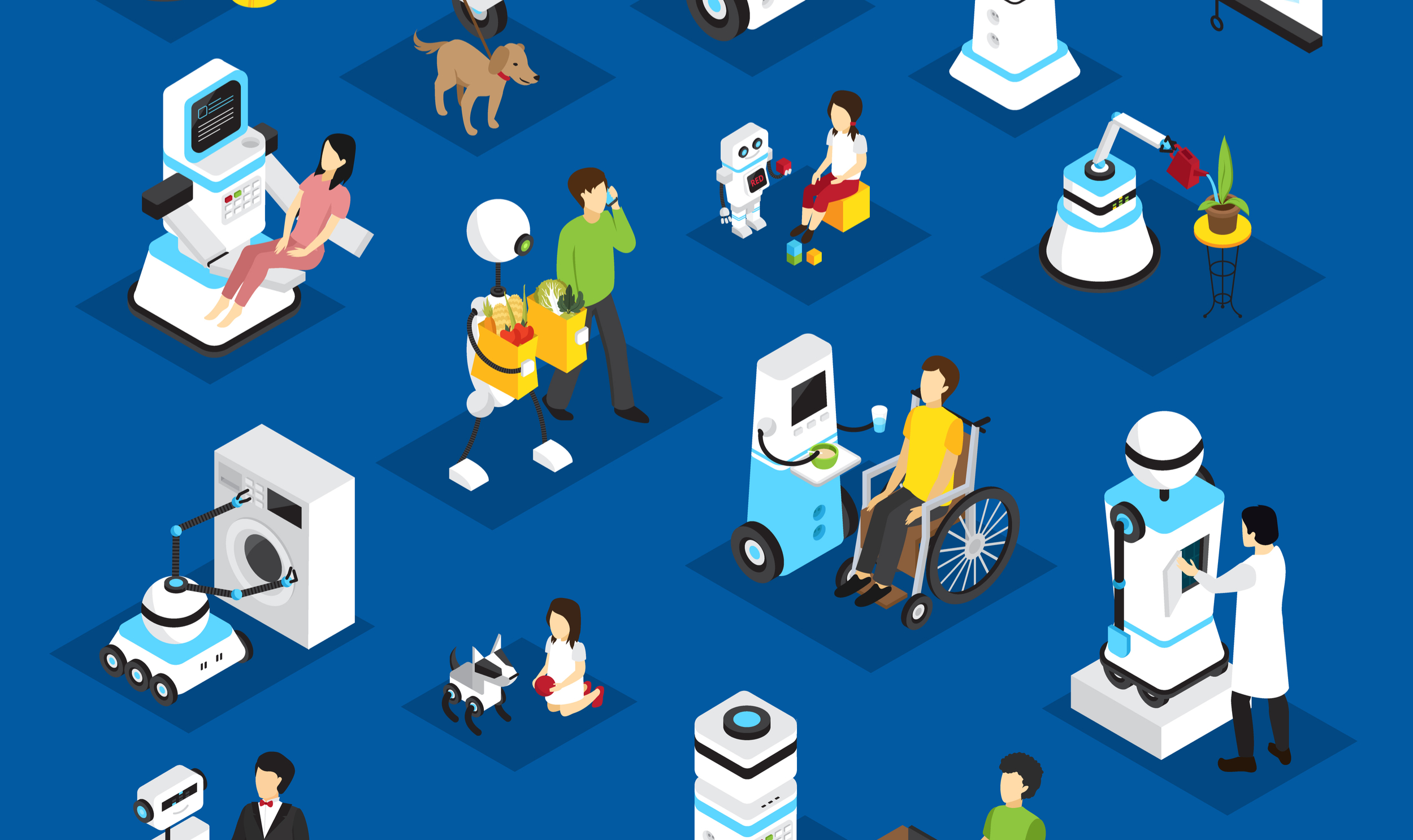
<p>Illustration by Macrovector via Shutterstock.</p>
Ordering a meal in 2019 can feel quite futuristic. At some establishments, food servers or cashiers have been replaced by tablets or kiosks. At Eatsa, an “automated restaurant” in the Bay Area, customers may see only a single employee.
Technology and automation’s deployment in the labor market is bringing deep changes to the nature of work. The full utilization of automation and artificial intelligence is still to come, and workforce development programs must be aware of potential challenges and seize on opportunities.
The impact of automation on low-wage workers isn’t completely clear, and forecasting these disruptions is difficult. Recent analyses have characterized how susceptible varying jobs are to automation. For example, the food server’s task of taking orders is at high risk of automation, but we still need servers to deliver the food from the kitchen to the table.
Not surprisingly, analyses find mixed effects on jobs, depending on the bundle of tasks that characterize a job. More repetitive tasks are more easily codified and are therefore more likely to be automated. On the flip side, abstract, cognitive tasks are typically considered less easily automated.
Previous Urban Wire posts have explored the impact of automation on education and training, how local workforce systems can prepare workers, and the importance of engaging those most likely to be affected. Common among all of this commentary is that automation will inevitably and significantly change the skills workers need to succeed in the labor market.
Career pathways and automation
"Career pathways” rethinks jobs as parts of structured career ladders, each with opportunities for advancement through additional training, experience, and credentialing. Career pathways have the potential to lead low-skill workers to higher-quality jobs over time.
But how will career ladders be weakened or eliminated by automation, and how can career pathways programs respond?
Career pathways programs are designed to help job-seekers without traditional postsecondary education and training succeed in the workforce. They do so by providing credentials, supportive services, and guidance to help job seekers move into fields with opportunities for advancement along career ladders.
Automation will permanently alter many of these career ladders, and practitioners and policymakers should be forward-thinking and consider how workforce development policy and programs will need to adapt to changes in technology.
For example, the health informatics career ladder is typically structured as:
Medical Transcriptionist → Medical Coder → Medical Biller → Health Information Technician → Other Health Administration and Management
Along this career ladder, we might speculate that medical coding jobs are susceptible to disruption from advances in artificial intelligence and machine learning, while medical billing jobs are susceptible to disruption from advances in software. Medical transcriptionist and health information technician jobs are probably less likely to be affected by technological change. If these changes did occur, many of the intermediate “rungs” in the career ladder would be weakened by technological change.
None of these changes are certain, of course, but the health informatics example illustrates how career pathways programs might respond to the prospect of a “hollowed out” career ladder. Career pathways programs could identify other jobs for integration into the pathways or help workers bridge the gap between entry-level jobs and those at the more skilled end of the spectrum.
Integrating new or similar jobs into a career ladder has been explored through the lens of “lateral” rather than “vertical” career pathways. For example, career pathways programs could provide participants with the flexibility to shift into an occupation that has been traditionally conceived as requiring similar nonautomatable skills, including unpredictable manual labor and social interaction.
Employer engagement is also key. A consistent back and forth with employers in a given field allows career pathways programs to remain responsive to the changing importance of various skills. And the flexibility to allow workers to shift laterally—in addition to vertically—reduces some of the damage that automation could have on these programs.
As talk of a coming “robocalypse” for jobs grows, workforce development programs should respond nimbly, keeping career pathways innovations in mind to help workers successfully navigate the future of work.
Let’s build a future where everyone, everywhere has the opportunity and power to thrive
Urban is more determined than ever to partner with changemakers to unlock opportunities that give people across the country a fair shot at reaching their fullest potential. Invest in Urban to power this type of work.